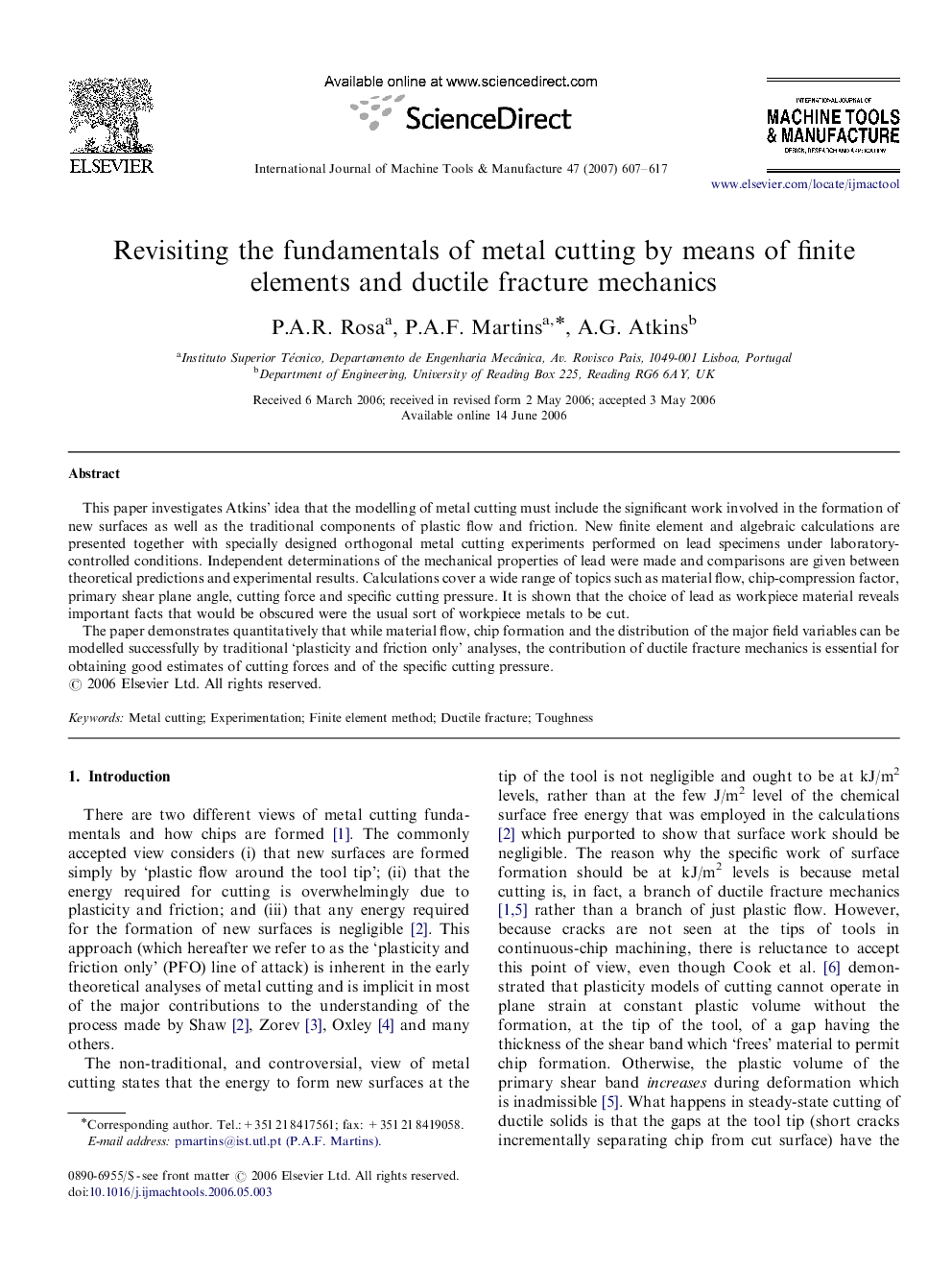| Article ID | Journal | Published Year | Pages | File Type |
|---|---|---|---|---|
| 781375 | International Journal of Machine Tools and Manufacture | 2007 | 11 Pages |
This paper investigates Atkins’ idea that the modelling of metal cutting must include the significant work involved in the formation of new surfaces as well as the traditional components of plastic flow and friction. New finite element and algebraic calculations are presented together with specially designed orthogonal metal cutting experiments performed on lead specimens under laboratory-controlled conditions. Independent determinations of the mechanical properties of lead were made and comparisons are given between theoretical predictions and experimental results. Calculations cover a wide range of topics such as material flow, chip-compression factor, primary shear plane angle, cutting force and specific cutting pressure. It is shown that the choice of lead as workpiece material reveals important facts that would be obscured were the usual sort of workpiece metals to be cut.The paper demonstrates quantitatively that while material flow, chip formation and the distribution of the major field variables can be modelled successfully by traditional ‘plasticity and friction only’ analyses, the contribution of ductile fracture mechanics is essential for obtaining good estimates of cutting forces and of the specific cutting pressure.
